13 ways to have a more eco-friendly Christmas, from reusing wrapping paper to reducing food waste
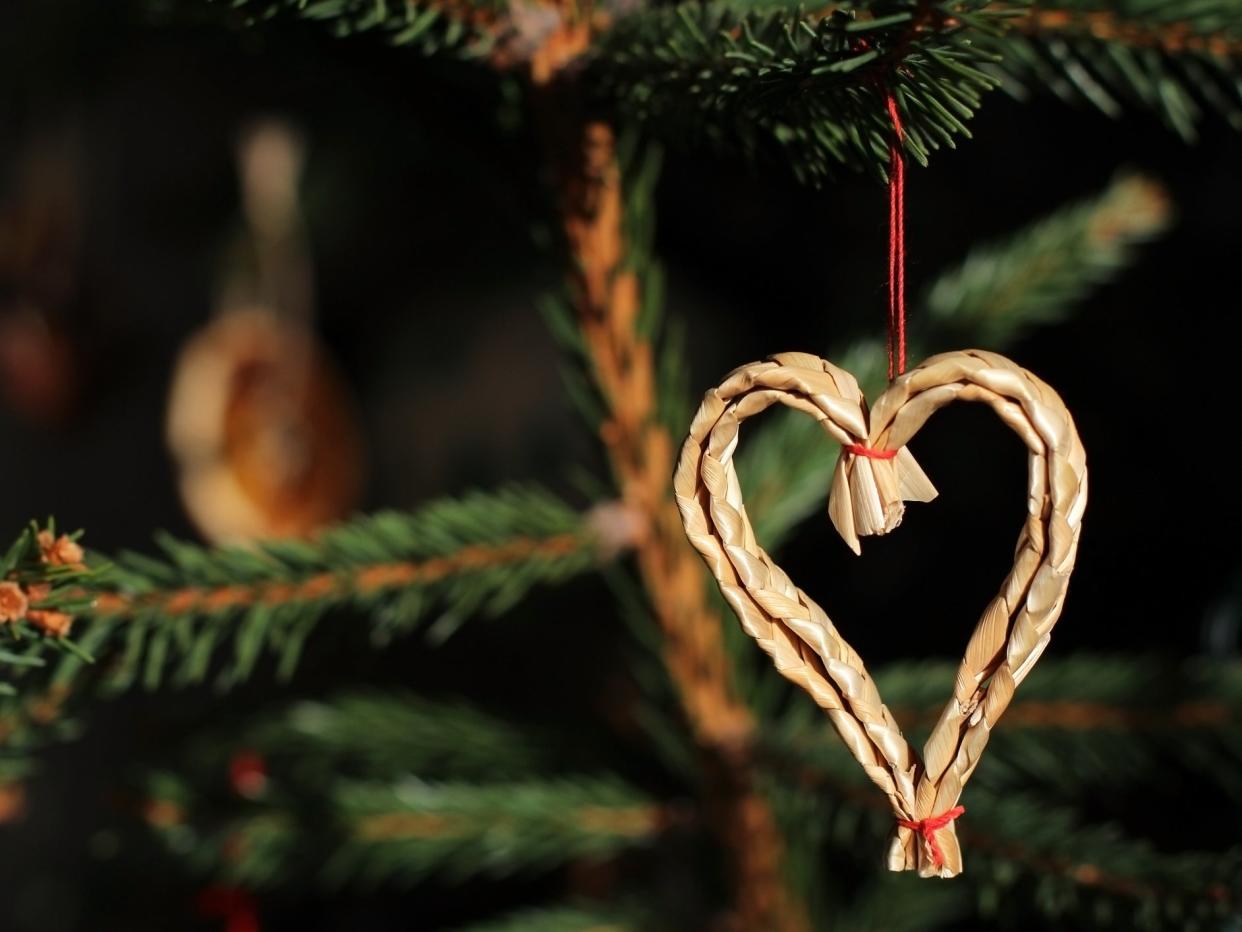
While Christmas is a season defined by generosity and kindness of spirit, it cannot be denied that for some, it is also a time of abundance and consumerism.
The Yuletide period results in huge amounts of waste, whether in the form of irresponsibly discarded Christmas trees, mounds of leftover food or presents that are bought, given and promptly thrown away.
Britons bin around 108 million rolls of wrapping paper, throw away 54 million platefuls of food and fill almost 100 million black bags with packaging from toys and gifts over the Christmas period, a 2017 study found.
The world has become increasingly eco-conscious in recent years, with millions of people across the world taking part in marches to demand action is taken to combat the climate crisis.
By making small changes over the festive season, you can play your part in encouraging those around you to become more conscious of their environmental impact.
Here are 13 ways to have a more eco-friendly Christmas:
1. Make the most of a reusable advent calendar
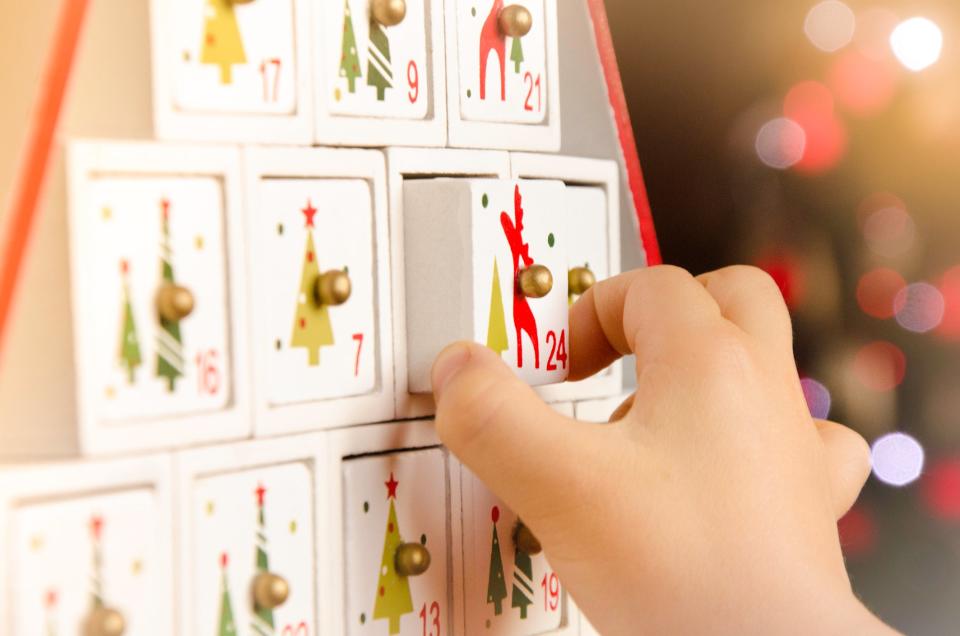
Every year, hordes of excited people seize the opportunity to open their advent calendars the second December arrives.
While the majority of advent calendars you see advertised will be of the disposable variety, it may be better to invest in an advent calendar that you can use on an annual basis.
Purchasing a wooden advent calendar is not only a handy way to be kinder to the planet, but if you’re buying one for someone else, it can allow you to personalise the treats the recipient is given for a thoughtful Christmas surprise.
2. Take reusable bags with you when gift shopping
An increasing number of retailers have been attempting to encourage consumers to shop in a more sustainable manner as of late, by charging for plastic bags or offering paper alternatives.
However, you can cut out the intermediary altogether by bringing your own shopping bags with you when perusing the high street for gifts for your loved ones.
3. Give gifts that will last
In some households, Christmas Day involves the exchanging of a plethora of presents between friends and family, some big, some small, and some extremely short-lived.
When thinking about the gifts you’re going to buy for Christmas, consider what kind of presents may be more long-lasting than others, and thus reduce the risk of simply being discarded after a short while.
Thoughtful, long-lasting presents may include a photo album, a plant or something the recipient has specifically said they want and is likely to use time and time again.
Alternatively, you could buy an experience rather than a material thing for Christmas, such as a trip to the theatre. A fun memory is a present that can last a lifetime, after all.
4. Adorn your home with sustainable decorations
Decorating one’s home for Christmas with tinsel, fairy lights and bunting is a huge highlight for many.
As beautiful as it can look to transform your household from top to bottom with festive embellishments, how much attention are you paying to the waste they create in the aftermath?
To prevent the habitual throwing away of plastic decorations, you could create your own homemade ones for the festive season.
“Foraging for pine cones and holly is the perfect excuse to enjoy the great outdoors and keep kids busy, if there’s any around,” says environmental organisation Friends of the Earth.
5. Be wary of your Christmas tree’s carbon footprint
While some may assume that purchasing a plastic tree would be a more environmentally friendly alternative to buying a real one, this isn’t necessarily the case.
The Carbon Trust outlines that a real Christmas tree has a “significantly lower” carbon footprint than an artificial tree, especially if it is thrown away in a responsible way.
According to the organisation, a natural 2m Christmas tree that does not have roots and is disposed of in a landfill produces a carbon footprint of approximately 16kg of CO2.
A 2m tree that has roots and is responsibly thrown away after being used at Christmas – by burning it on a bonfire, planting it or having it chipped – has a carbon footprint of around 3.5kg of CO2.
Meanwhile, a 2m plastic Christmas tree has a carbon footprint of around 40kg of CO2, more than 10 times greater than a properly disposed-of real tree.
To read more about the environmental impact of real and artificial Christmas trees, click here.
6. Make sure you use LED lights
Lights are a significant aspect of Christmas celebrations, customarily used to decorate trees, the interior of homes and the exterior.
Should you use lights as part of your Christmas decorations, it would be more eco-conscious to use LED bulbs.
“LED lights are up to 80 per cent more efficient than traditional lighting such as fluorescent and incandescent lights,” explains the Solar Electric Power Company.
“Ninety-five per cent of the energy in LEDs is converted into light and only 5 per cent is wasted as heat. This is compared to fluorescent lights which convert 95 per cent of energy to heat and only five per cent into light.”
While LED bulbs may be more expensive than other types of bulbs, they last longer, which can make them a better investment.
7. Be eco-conscious with your wrapping paper
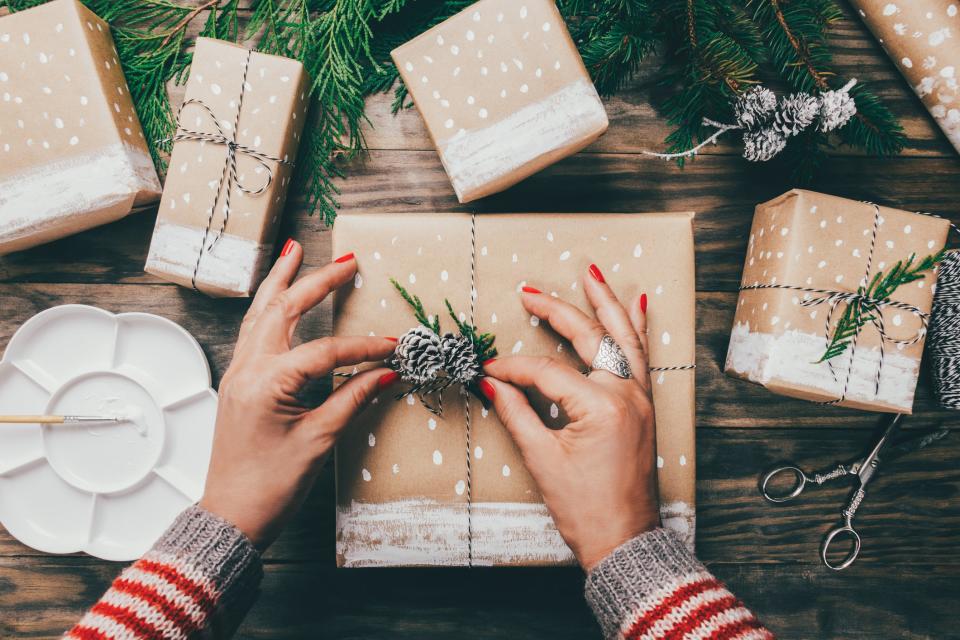
Yes, it can be tempting when Christmas shopping to buy several rolls of sparkly, eye-catching wrapping paper to beautify all of your presents.
However, it is not an essential part of the festivities, especially when you can be wrapping your gifts in a more sensible manner.
According to Envirowaste, over the Christmas period 83 sq km of wrapping paper will be thrown out or burnt in the UK.
Instead of throwing away your wrapping paper, you can either save it for future use or shred it to use as protective packaging for future gifts.
It may also be wise to ensure that you use eco-friendly wrapping paper that can be recycled, such as from Re-wrapped.
8. Refrain from sending physical Christmas cards
While it can be lovely to receive Christmas cards, they can result in a great deal of waste if they are simply thrown away shortly after the Yuletide season.
If you still would like to send cards to your friends, family or colleagues, you could either do so by creating an e-card online or by purchasing cards that you have checked are recyclable and eco-friendly.
9. Create a homemade wreath
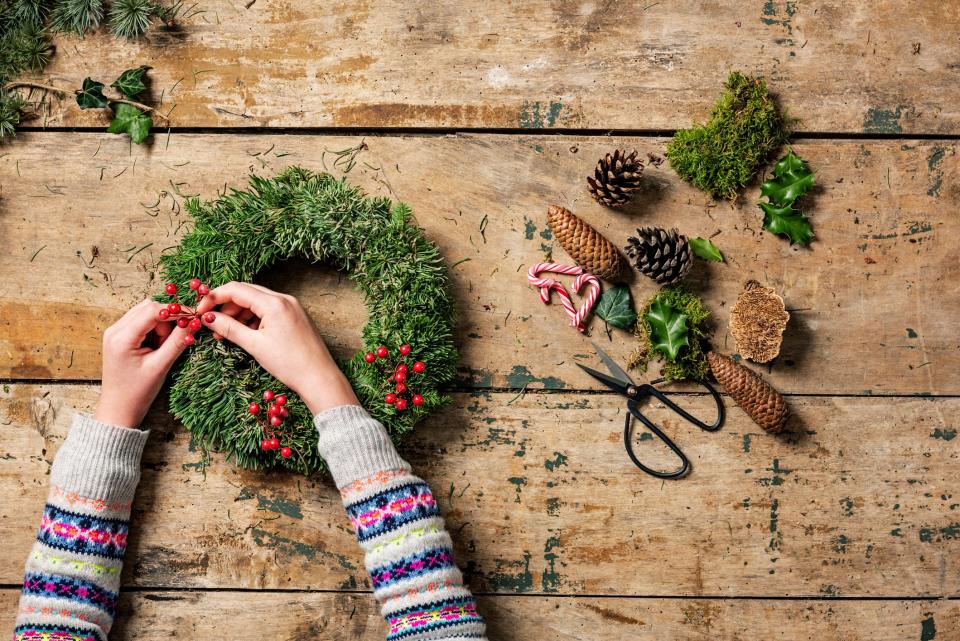
Why buy a wreath for your front door when you can make one from scratch?
Using materials such as a hanger from your wardrobe, foliage from outside, berries and dried orange slices, you can create a wreath that is not only sustainable, but a dazzling display of nature.
10. Purchase sustainable crackers
When you think about Christmas crackers, the first thought that pops into your head is most likely the corny jokes and the novelty gifts that emerge from them during the revelry of Christmas dinner.
How many of us consider the environmental impact of crackers?
If you want to reduce your negative environmental impact, then you can replace your traditional plastic or single-use crackers with more sustainable options.
There are plenty of eco-friendly alternatives on the market, including these recyclable crackers from Love Tiki or these reusable crackers from Keep This Cracker, which you can fill with your own gifts.
11. Be wary when sourcing your festive food
You don’t have to venture far to find the food that will fill the bellies of your guests at Christmas.
Buying the ingredients for your meal from local stores and markets will not only reduce your carbon footprint, but will also help you to show your support for local businesses.
Furthermore, purchasing meat that is organic can be beneficial for the environment and your wellbeing, Soil Association outlines.
“The quality of the food we produce has a profound impact on our own health and the health of the planet, so when it comes to eating meat, our philosophy is to eat a little less meat overall, so that the meat you do buy can be higher welfare,” the organisation states.
12. Do not use disposable crockery
If you are serving food for large numbers of people, your first thought may typically be to buy a large quantity of plastic knives, forks and plates so that there’s no need to clear up afterwards.
If this sounds familiar, then you could opt for biodegradable crockery instead, so that you are not plagued by the guilt of throwing away items that are not recyclable.
13. Reduce your food waste
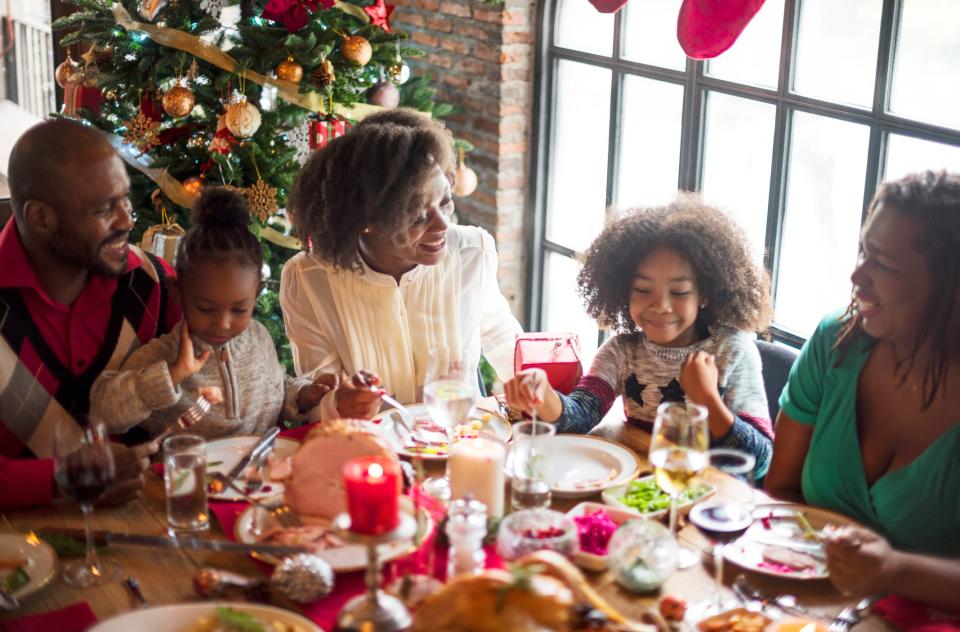
Over the Christmas period, approximately 5 million Christmas puddings, 2 million turkeys and 74 million mince pies are thrown away in the UK, The Big Issue reported last year.
These quantities are staggering, especially given the fact that nearly 2 million people in the UK are undernourished and more than half a million rely on food parcels, according to Oxfam.
Organisations such as Fare Share, City Harvest and Food Cycle collect surplus food, which is then distributed to those who are in need.
If you do not finish all the food on your Christmas table, then it is important to think twice before chucking it in the bin, as both an environmental and a social issue.
Read More
Where to shop online for thoughtful Christmas presents
Are artificial or real Christmas trees better for the environment?
9 best Christmas crackers full of treats you’ll actually keep

